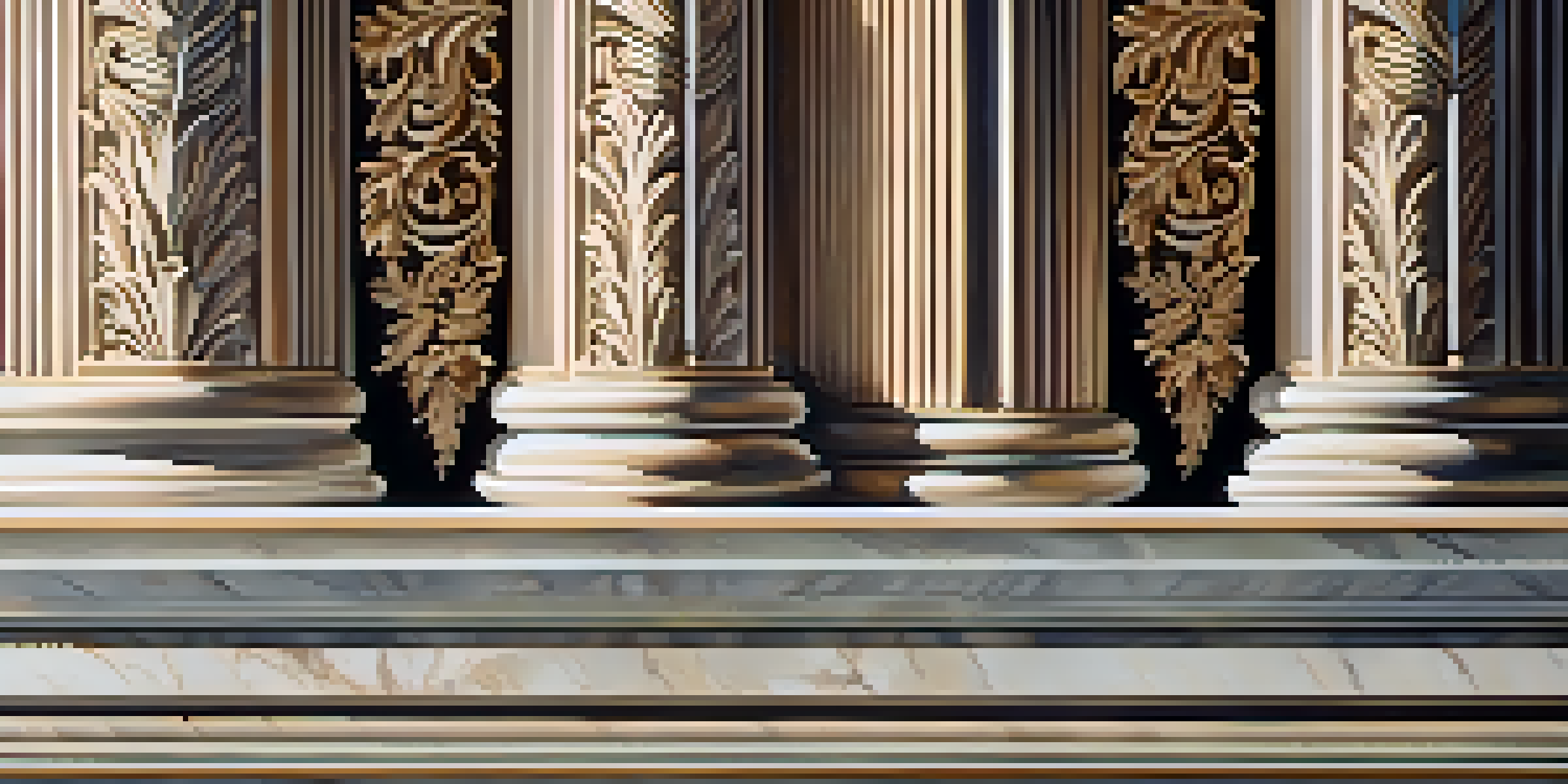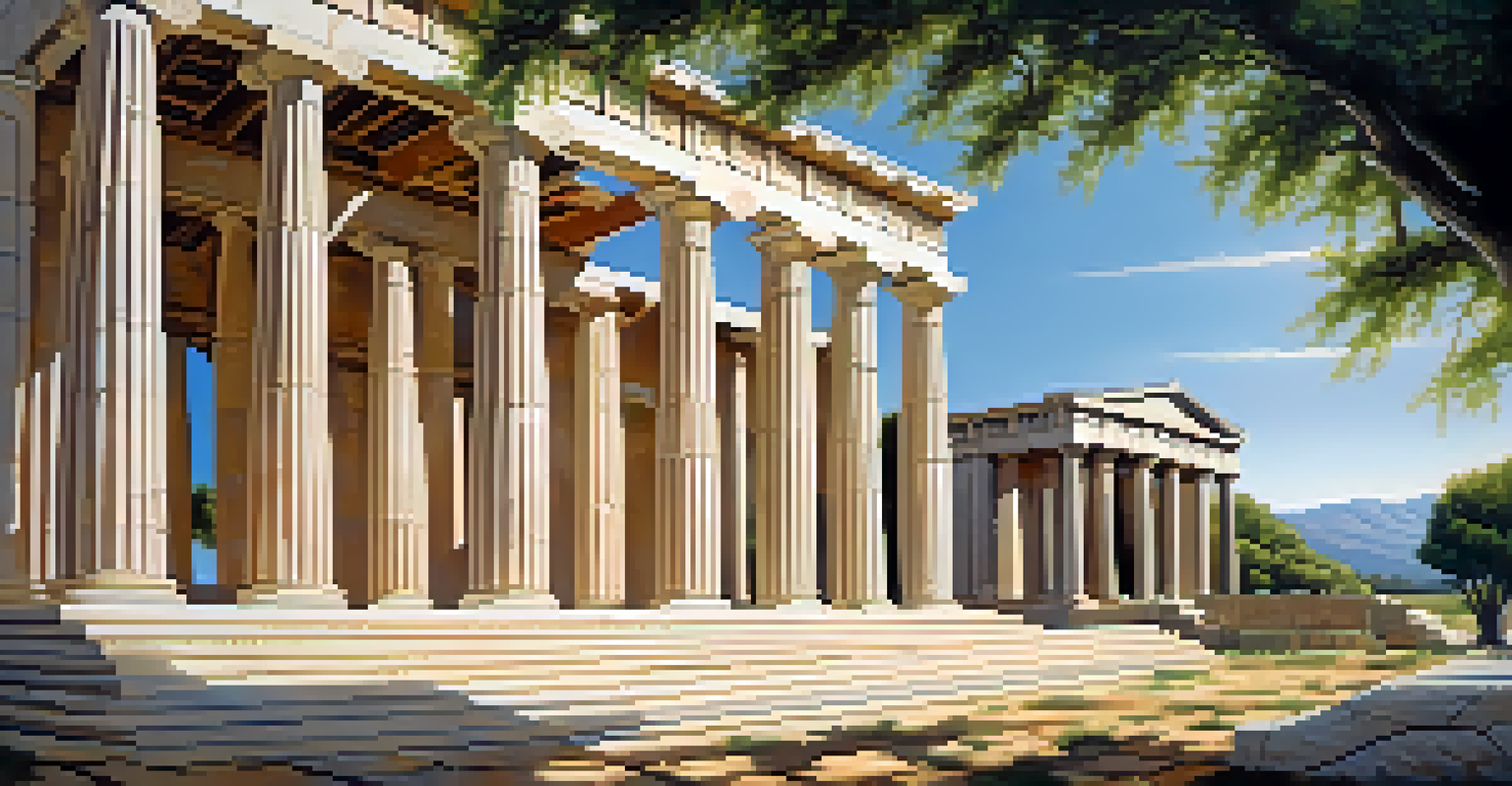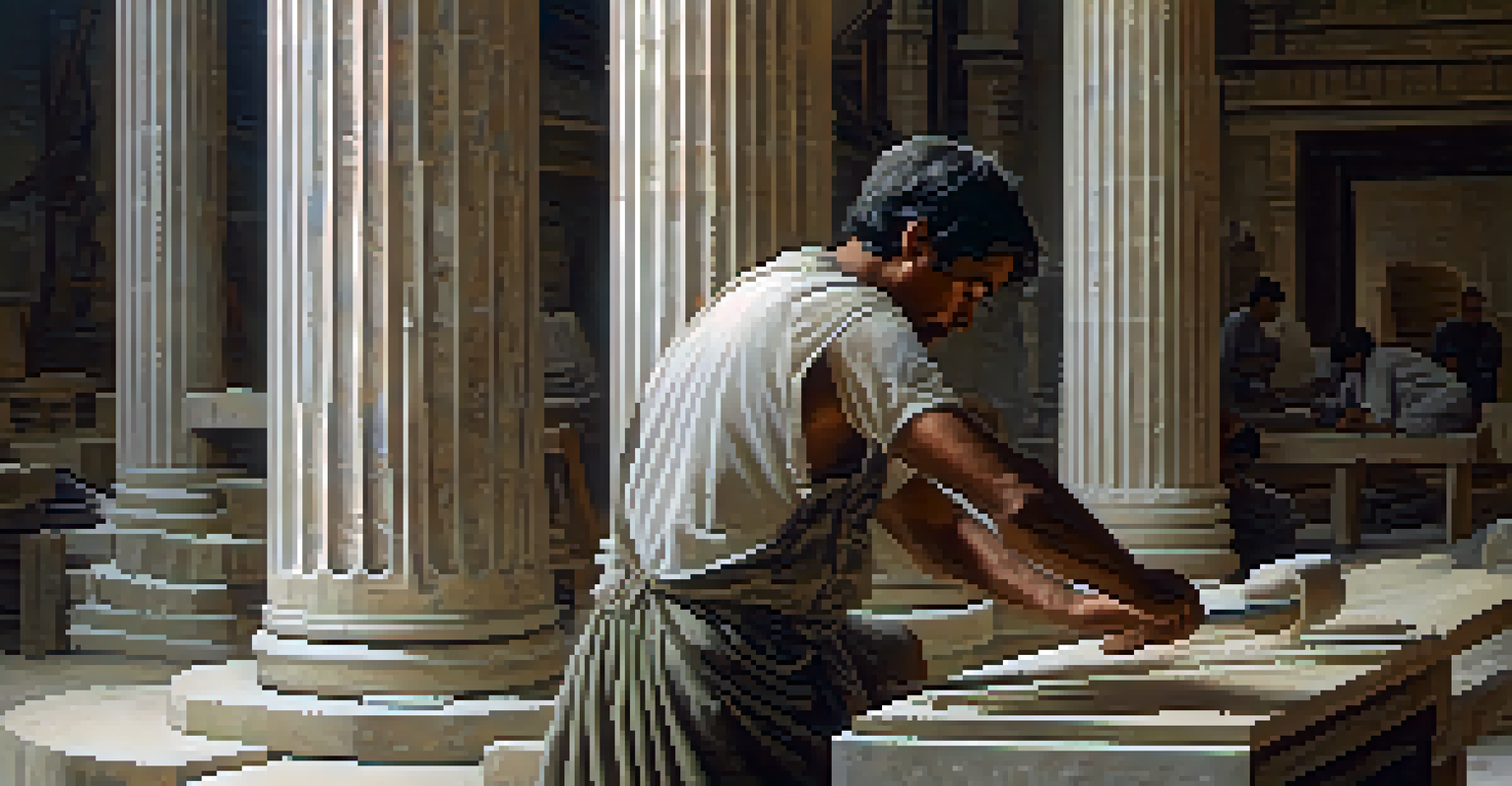The Role of Carved Columns in Classical Architecture

An Introduction to Carved Columns in Classical Structures
Carved columns have been a hallmark of classical architecture, showcasing both artistry and engineering. These columns, often adorned with intricate designs, served not just a structural purpose but also conveyed cultural significance. In many ancient civilizations, such as the Greeks and Romans, columns became symbolic of power, beauty, and order.
Architecture is the art of how to waste space.
The elegance of these columns draws the eye and invites admiration, making them key features in temples, theaters, and public buildings. By incorporating various styles—like Doric, Ionic, and Corinthian—architects could express different aesthetics and values. Each style, with its unique details, tells a story of the time and place it represents.
As we delve deeper into the role of carved columns, we'll uncover how they influence the overall harmony and balance in architectural design. These structures do more than hold up roofs; they form a visual dialogue with the spaces they inhabit.
The Architectural Styles of Carved Columns
Classical architecture is rich with diverse column styles, each offering its own charm and character. The Doric column, for example, is known for its sturdy, simplistic design, reflecting strength and utility. In contrast, the more ornate Corinthian column, with its elaborate leaf motifs, showcases luxury and artistry.

These styles weren't merely aesthetic choices; they were also indicative of the values and priorities of the civilizations that created them. For instance, the Romans often preferred the Corinthian style as a symbol of their wealth and cultural sophistication. This diversity in column design allowed architects to convey messages and themes through the very structure of their buildings.
Carved Columns Define Classical Design
Carved columns play a crucial role in classical architecture, serving both structural and symbolic purposes that reflect the values of ancient civilizations.
Understanding these styles helps us appreciate not just the physicality of carved columns but their narrative power. Each column stands as a testimony to the era it represents, giving us insight into the cultural priorities of ancient societies.
Symbolism and Cultural Significance of Carved Columns
Beyond their structural role, carved columns carried deep symbolic meanings in classical architecture. They often represented the ideals of beauty, order, and harmony, reflecting the philosophical beliefs of the time. For example, the use of the Ionic column—characterized by its volutes—symbolized sophistication and intellectual pursuits.
The details are not the details. They make the design.
In religious contexts, columns were often seen as embodiments of strength and stability. Temples dedicated to gods featured grand columns that not only supported the structure but also elevated the divine presence they housed. This integration of form and function made columns powerful symbols in both public and private spaces.
As we explore the cultural layers of carved columns, it becomes clear they were much more than mere supports; they were essential elements of storytelling in architecture. Each intricate detail served to reinforce the values and aspirations of the society that created them.
Craftsmanship: The Art of Carving Columns
The craftsmanship involved in creating carved columns is nothing short of remarkable. Skilled artisans dedicated years to mastering their trade, often using tools that were rudimentary by today’s standards. The precision required to create intricate designs, especially on hard stone materials like marble, is a testament to their dedication and talent.
This artistry wasn't just about functionality; it was an expression of cultural identity and pride. Each column carved by the hands of a master craftsman served as a signature of their skill and creativity. The meticulous attention to detail transformed simple stone into breathtaking works of art that continue to inspire awe.
Artistry in Column Craftsmanship
The intricate craftsmanship of carved columns showcases the skill and dedication of artisans, transforming stone into stunning works of art that embody cultural identity.
As we appreciate the craftsmanship of carved columns, we also recognize the legacy these artisans left behind. Their work not only defined the architectural landscape of their time but also set standards for generations of builders and artists to come.
The Role of Columns in Structural Integrity
While carved columns are often celebrated for their beauty, their primary role in architecture is structural integrity. These columns are designed to bear significant loads, distributing weight evenly to ensure stability in large structures. The engineering principles behind their design are just as crucial as their aesthetic appeal.
In classical architecture, columns were strategically placed to support roofs and upper levels, allowing architects to create expansive, open interiors. This blend of art and engineering is what made classical buildings not only stunning but also functional. Without the strong foundation provided by these columns, many iconic structures would not have stood the test of time.
By understanding the engineering behind carved columns, we can appreciate their dual role as both art and architecture. They are perfect examples of how beauty and function can coexist harmoniously in design.
Influence of Carved Columns on Modern Architecture
The legacy of carved columns extends far beyond ancient Greece and Rome; they continue to influence modern architecture today. Many contemporary buildings incorporate classical column styles, blending historical elements with modern design. This fusion creates a sense of continuity, linking the past with the present.
Architects often draw inspiration from the proportions and designs of classical columns, utilizing them to evoke a sense of grandeur. For instance, government buildings and museums often feature columns that pay homage to their classical predecessors, creating an air of authority and permanence. This connection to history enriches the architectural narrative of modern structures.
Modern Architecture's Classical Influence
Many contemporary buildings draw inspiration from classical column styles, creating a dialogue between history and modern design that enhances architectural narratives.
As we analyze modern architecture, it's fascinating to see how the principles established by ancient craftsmen still hold relevance. Carved columns remind us that the past can inform the future, creating a rich tapestry of design that honors tradition while embracing innovation.
Preserving and Restoring Historic Carved Columns
As we admire the beauty of carved columns, it's essential to consider the importance of preservation and restoration. Many historic columns face deterioration due to environmental factors, neglect, or the passage of time. Conserving these structures is crucial to maintaining our architectural heritage.
Restoration efforts often involve meticulous techniques to ensure that the original craftsmanship is honored. This can include cleaning, repairing, and sometimes recreating missing elements using traditional methods. By preserving these columns, we not only protect our history but also provide future generations with a tangible connection to the past.

Engaging with the preservation of carved columns helps us appreciate their significance in our cultural landscape. It serves as a reminder that these monumental pieces of art are not just relics; they are living parts of our architectural story.